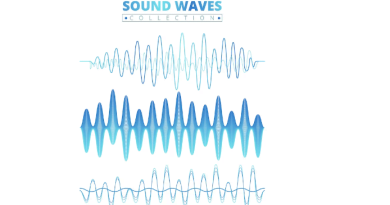What is Digital Electronics? Basic Concepts, Components, and Applications
What is Digital Electronics? Basic Concepts, Components, and Applications
Digital electronics is the branch of electronics that deals with discrete or binary signals, such as bits (0 or 1), logic levels (high or low), logic gates (AND, OR, NOT, etc.), etc. Digital signals can represent various types of information or data, such as text, numbers, images, etc. Digital electronics can store, process, transmit, or receive digital signals for various purposes and applications.
Digital electronics can be contrasted with analog electronics, which deal with continuous or varying signals, such as voltage, current, resistance, capacitance, and inductance. Analog signals can represent various physical quantities or parameters, such as sound, light, temperature, pressure, etc. Analog electronics can process, amplify, filter, modulate, demodulate, or convert analog signals for various purposes and applications.
Digital and analog electronics are not mutually exclusive but complementary. They can be combined or interfaced to create hybrid systems that perform various functions and tasks. For example, a digital-to-analog converter (DAC) can convert a digital signal into an analog signal, and an analog-to-digital converter (ADC) can do the opposite. A microcontroller can use an ADC to read an analog sensor and a DAC to control an analog actuator.
Why is Digital Electronics Useful?
Digital electronics has many advantages over analog electronics or other methods of signal processing and conversion, such as:
- Higher accuracy: Digital electronics can avoid the errors or distortions that may occur due to noise, interference, aging, etc., in analog electronics or other methods.
- Higher speed: Digital electronics can perform faster operations and calculations than analog electronics or other methods by using appropriate devices and techniques, such as binary arithmetic, parallel processing, pipelining, etc.
- Higher capacity: Digital electronics can store more information than analog electronics or other methods by using appropriate devices and techniques, such as binary encoding, compression, encryption, etc.
- Higher flexibility: Digital electronics can adapt to the changes and variations in the demand and supply of information by using appropriate devices and techniques, such as programmable logic, reconfigurable hardware, software updates, etc.
What are the Basic Concepts and Components of Digital Electronics?
Digital electronics involves various concepts and components essential for understanding and designing digital circuits and systems. Some of the most common ones are:
- Bits: These are the basic units of information in digital electronics. They can have only two possible values: 0 or 1. They can represent various types of information or data (such as text, numbers, images, etc.) using different codes or formats, such as ASCII, binary, hexadecimal, etc.
- Logic levels: These are the physical voltages that correspond to the logical values of bits. They can vary depending on the type of device or circuit (such as TTL, CMOS, etc.) but usually have two ranges: high or low. For example, in TTL logic, a high level is between 2V and 5V, and a low level is between 0V and 0.8V. Logic gates: These devices perform basic logical operations on one or more bits (such as AND, OR, NOT, etc.) by using electrical circuits or components, such as transistors, diodes, resistors, etc. They can be classified into various types based on their function or number of inputs, such as unary gates (NOT), binary gates (AND, OR, NAND, NOR, XOR, XNOR), ternary gates (AND-OR-INVERT), etc.
- Combinational circuits produce outputs that depend only on the current inputs and not on the previous inputs or states. They can be used to perform various functions or operations on bits or groups of bits (such as addition, subtraction, multiplication, division, comparison, etc.) by using multiple logic gates or components, such as adders, subtractors, multipliers, dividers, comparators, etc.
- Sequential circuits produce outputs that depend on the current and previous inputs or states. They can store or manipulate information or data over time using various logic gates or components, such as flip-flops, latches, registers, counters, shift registers, etc.
How can you learn more about Digital Electronics?
If you are interested in learning more about digital electronics, you can check out these resources:
- [Digital Electronics – an overview | ScienceDirect Topics]: A web page overviews digital electronics and its components and concepts.
- [Digital Electronics | Coursera]: An online course that covers the fundamentals of digital electronics design and analysis using various methods and tools, such as Boolean algebra, Karnaugh maps, truth tables, etc.
- [Digital Systems: From Logic Gates to Processors | edX]: An online course that covers the principles and applications of digital systems using various topics and examples, such as logic gates, combinational circuits, sequential circuits, processors, etc.
- [Digital Circuits | MIT OpenCourseWare]: A free online course that covers the theory and practice of digital circuits using various topics and examples (such as bits, logic levels, logic gates, combinational circuits, sequential circuits, etc.)
Frequently Asked Questions (FAQs)
1. What is digital electronics?
- Digital electronics is a field that deals with manipulating and processing digital signals, using binary code (0s and 1s) to represent information.
2. How does digital electronics differ from analog electronics?
- Digital electronics use discrete, quantized signals (0s and 1s), while analog electronics use continuous, variable signals.
3. What are logic gates in digital electronics?
- Logic gates are fundamental building blocks in digital circuits. They perform logical operations like AND, OR, and NOT based on input signals.
4. What are flip-flops, and how are they used in digital circuits?
- Flip-flops are sequential logic circuits used to store binary information. They are vital for memory and sequential circuitry.
5. What is binary code, and how is it used in digital electronics?
- Binary code is a system of representing data using only two symbols: 0 and 1. It is the foundation of digital electronics for data storage and processing.
6. What is the significance of binary arithmetic in digital electronics?
- Binary arithmetic is used for calculations and mathematical operations in digital circuits. It simplifies data manipulation using logic gates.
7. What are the basic components of a digital circuit?
- Digital circuits consist of logic gates, flip-flops, registers, multiplexers, and decoders.
8. How do digital electronics contribute to modern technology?
- Digital electronics are the basis of modern computing, communication, automation, and control systems, enabling advanced technology applications.
9. What are some common digital electronics applications in everyday life?
- Common applications include smartphones, computers, digital cameras, digital watches, and household appliances with digital displays.
10. How does digital electronics impact the telecommunications industry?
- Digital electronics enable efficient data transmission, encoding, and error correction in telecommunications, leading to clearer and more reliable communication.
11. What role do digital electronics play in the field of automation and robotics?
- Digital electronics are essential in control systems for automation and robotics, allowing precise control of movements and tasks.
12. Can digital electronics be used in medical devices?
- Yes, digital electronics are used in medical devices such as MRI machines, pacemakers, and digital thermometers for accurate data processing and control.
13. How do digital electronics contribute to energy-efficient technology?
- They enable power-efficient devices by allowing precise control of power states, reducing energy consumption during standby and operation.
14. What are the future trends in digital electronics?
- Future trends include the development of smaller, more powerful devices, advances in artificial intelligence, and the integration of digital electronics into IoT (Internet of Things) applications.
15. Are there educational resources available for learning digital electronics?
- Yes, numerous online courses, textbooks, and tutorials are available to help in learning digital electronics.




